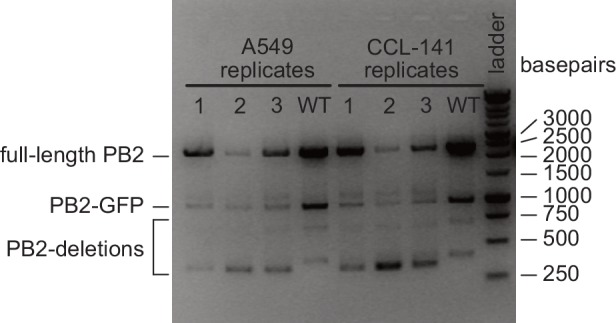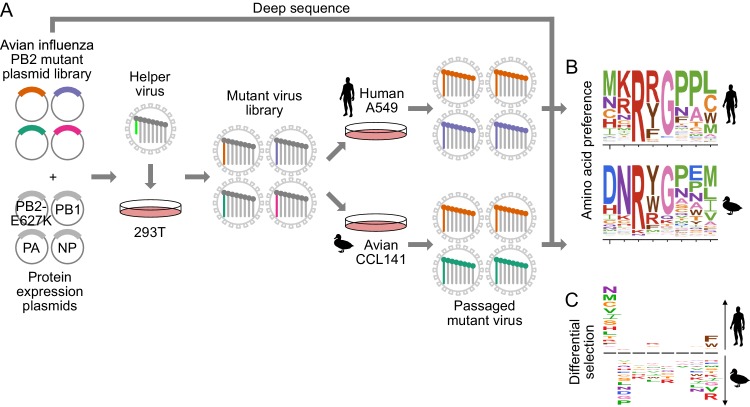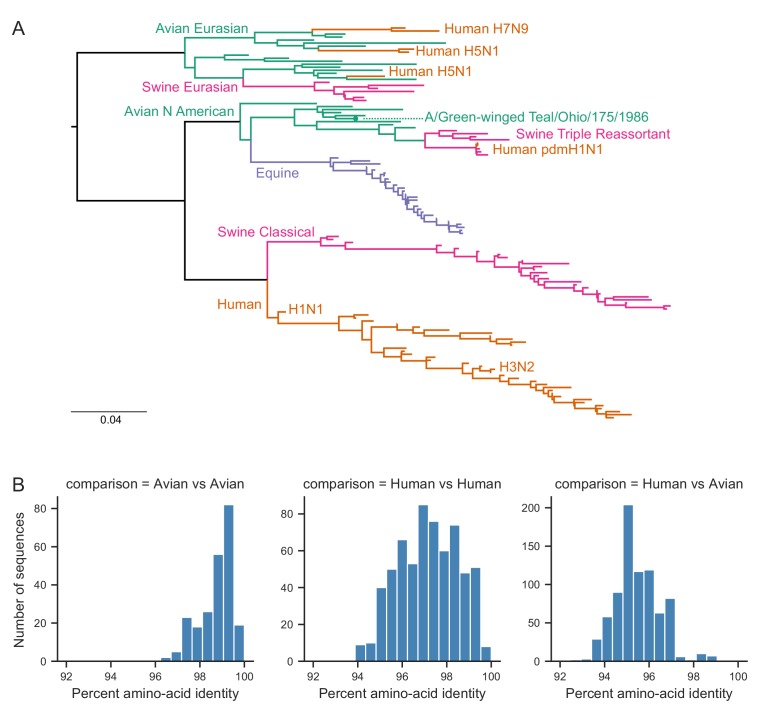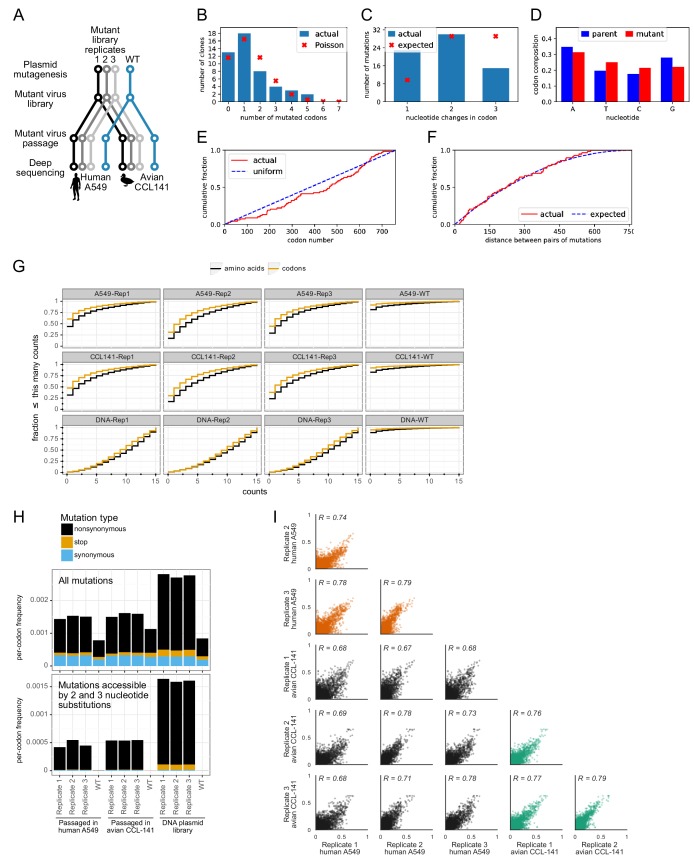Figure 1. Deep mutational scanning of avian influenza PB2 in human and avian cells.
(A) We mutagenized all codons of PB2 from an avian influenza strain. We generated mutant virus libraries using a helper-virus approach, and passaged libraries at low MOI in human (A549) or duck (CCL-141) cells to select for functional PB2 variants. (B) We deep sequenced PB2 mutants from the initial mutant plasmid library and the mutant virus library after passage through each cell type. We computed the ‘preference’ for each amino acid in each cell type by comparing the frequency of each mutation before and after selection. In the logo plots, the height of each letter is proportional to the preference for that amino acid at that site. (C) To identify mutations that are adaptive in one cell type versus the other, we computed the differential selection by comparing the frequency of each amino-acid mutation in human versus avian cells. Letter heights are proportional to the log enrichment of the mutation in human versus avian cells. Figure 1—figure supplement 1 shows the phylogenetic relation of the chosen avian influenza strain to other influenza strains. Figure 1—figure supplement 2 shows further details of deep mutation scanning experiment. Figure 1—figure supplement 3 shows relative amplification of full-length PB2 versus PB2-GFP and PB2-deletion gene segments.
Figure 1—figure supplement 1. Phylogenetic relationship of PB2 sequence of chosen avian influenza strain to other influenza strains.
Figure 1—figure supplement 2. Details of deep mutational scanning experiment.
Figure 1—figure supplement 3. Relative amplification of full-length PB2 versus PB2-GFP and PB2-deletion gene segments.




